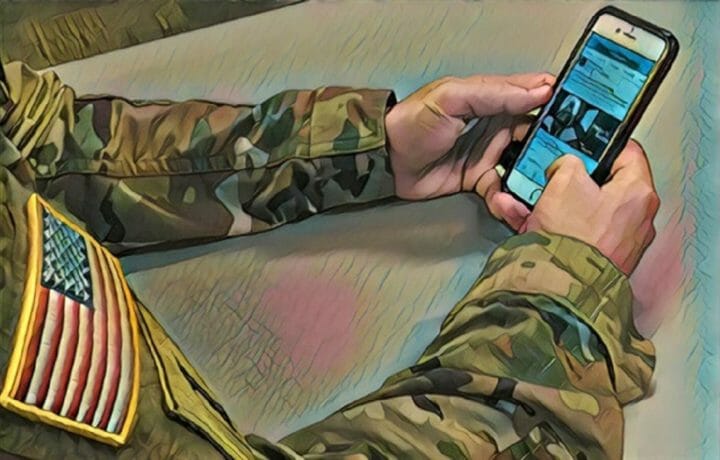Social media has become an essential tool for organizations to connect with their audiences, build trust, and share their message. For the U.S. military, with its need to recruit top talent, maintain public support, and communicate its values, this should be an area of strength. Yet, military social media often feels out-of-touch, overly formal, or downright ineffective. Why is an institution known for its precision and discipline so poor at navigating the digital landscape?
Why Military Social Media is Failing
It’s not about branding, since the separate branches of the U.S. Military are recognizable worldwide, especially the Marines. They have had the best branding and reputation for decades. The other branches could learn a thing from them. The real issue goes much deeper than what is being posted, the stories that are being told, and the voices that are telling them. The problem is the out-of-touch leadership who still believe that wars will be fought in the physical realm and that the digital realm is not a theater of war. But that is incorrect, and the enemies of the state are leveraging not only information against us, but influence, coercion, and potential insurrection through social media platforms.
1. Overemphasis on Bureaucracy
Some military social media managers must navigate layers of approval processes before posting content. This red tape slows down response times, makes content feel outdated, and stifles creativity. By the time a post is cleared, its relevance may have already waned.
Breaking news or timely trends often require instant engagement to capture public attention. In the military, such opportunities are frequently missed because approval chains prioritize compliance over agility.
2. Inconsistent Branding Across Platforms
Each branch of the military—and even individual units within those branches—tends to run their social media accounts independently, often without cohesive strategy or oversight. This leads to inconsistency in tone, messaging, and visual branding.
While decentralized control allows units to showcase their unique identities, it also creates a fractured online presence that fails to portray the military as a unified entity. Potential recruits and the public are left with a disjointed impression of what the military stands for.
3. A Lack of Understanding of Modern Platforms
Social media is a rapidly evolving space, but many military units still approach it with outdated tactics. Posts often mimic traditional statements or stiff press releases, which feel cold and unrelatable in an era dominated by memes, trends, and authentic storytelling.
Furthermore, some units fail to adapt their content to platform-specific audiences. TikTok, for example, thrives on humor and creativity, while LinkedIn is better suited for professional, career-focused content. This lack of platform literacy results in missed opportunities to connect with audiences where they are.
4. Fear of Controversy
The military’s deep-rooted culture of risk aversion impacts its social media presence. Leaders often shy away from posting bold, creative, or experimental content for fear of backlash or misinterpretation. While understandable, this approach can result in sterile and uninspiring feeds that fail to engage audiences.
Additionally, military social media managers must tread carefully to avoid operational security (OPSEC) violations, which further limits what can be shared and how.
5. Underutilization of Talent
The military is filled with skilled communicators, tech-savvy personnel, and creative thinkers, but these individuals are often underutilized or undertrained. Many social media roles are assigned as secondary duties to junior personnel with little formal training or experience in marketing or public relations.
In contrast, civilian organizations invest heavily in specialized teams of content creators, analysts, and strategists. The military’s lack of similar investment reflects a failure to prioritize social media as a key tool for public engagement.
6. Misalignment with Audience Expectations
Younger generations, particularly those in the military’s target recruitment demographic, expect authenticity, transparency, and relatability from organizations they follow online. Unfortunately, military accounts often default to generic promotion of ceremonies, awards, and formal events—content that doesn’t resonate with the average viewer.
When military accounts attempt humor or trendy content, they sometimes miss the mark, coming across as inauthentic or out-of-touch. This misalignment only widens the gap between the military and its intended audience.
7. Why the Enemy Excels on Social Media
Adversaries and extremist groups often outperform the U.S. military on social media because they operate without the same constraints. They move quickly, adapting to trends and using authentic, emotionally charged narratives to influence their audience.
These groups excel at crafting content that speaks directly to their followers’ grievances and aspirations. While the military prioritizes risk management and compliance, the enemy prioritizes speed, simplicity, and emotional resonance. By tapping into the psychology of their audience, they create compelling propaganda that spreads rapidly, often evading moderation algorithms.
This asymmetry reveals a harsh truth: in the digital battlefield, the side that controls the narrative—not necessarily the one with superior firepower—often gains the upper hand.
The Path Forward
The U.S. military’s struggles with social media stem from a combination of cultural, structural, and technical challenges. However, with the right investments in training, resources, and strategy, these shortcomings can be overcome. By embracing authenticity, streamlining approval processes, and empowering social media managers with the tools they need, the military can transform its online presence into a powerful asset.
Social media is more than just a platform for posts—it’s a vital connection to the public and a chance to tell the military’s story in a way that resonates. If the military wants to engage future recruits and strengthen its relationship with the American people, it’s time to step up its social media game. The tools are there; all it needs is the will to use them effectively.



